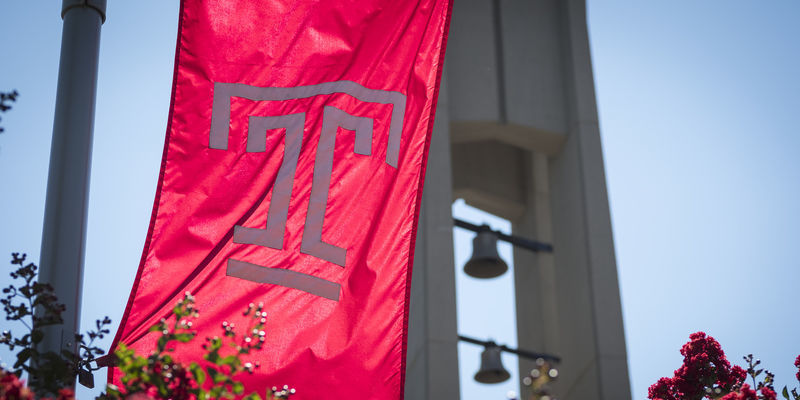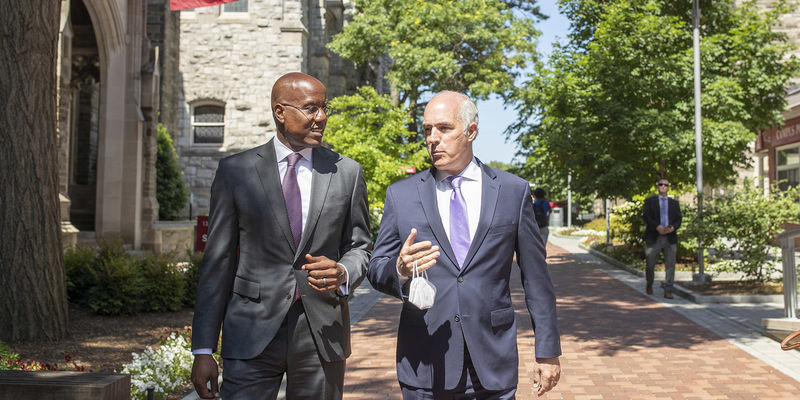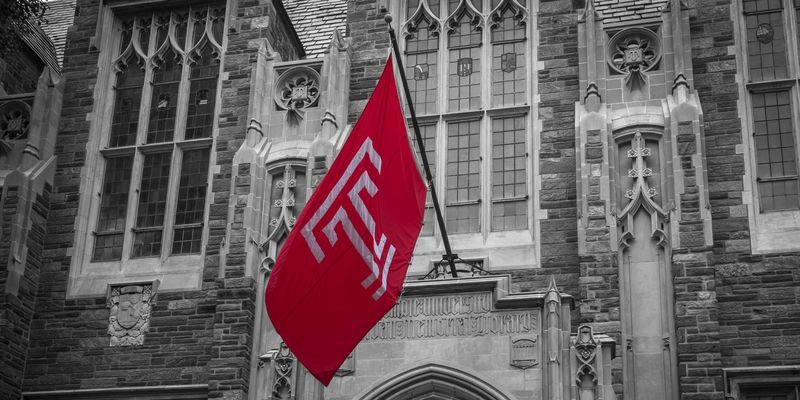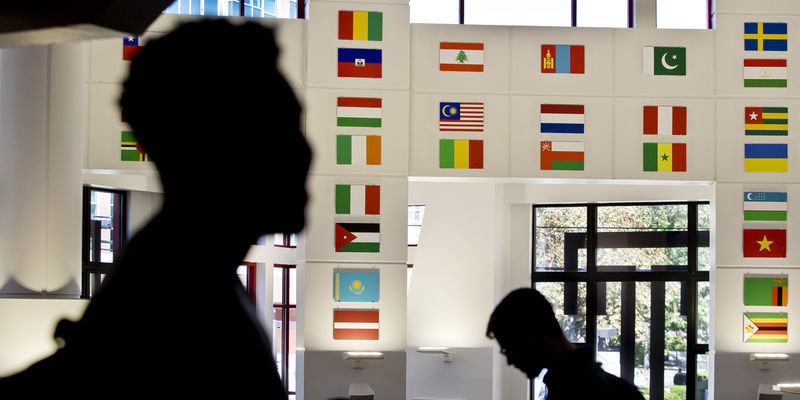Introducing the Temple University Strategic Plan
Provost Gregory N. Mandel shares more about the development of the university’s strategic plan and how it will help shape the future of Temple.

In 2020, Temple University embarked on a bold journey to develop its strategic plan—an ambitious collective vision for the university. Today, Provost Gregory N. Mandel shared the Temple University Strategic Plan with the community.
The road to developing the final plan began with a universitywide strategic planning process, which included crafting a set of core values that, along with our mission statement, represent the Temple community and its purpose. They are also embodied in the university’s aspiration statement, and have helped in the development of our strategic priorities.
These strategic priorities—boundless access, educational value, thought leadership, community engagement and reputational excellence—serve as the roadmap for Temple’s bright future. They are supported by a variety of initiatives, including ten highlighted initiatives, which will help us meet our goals.
Along with engaged leaders across the university, Provost Mandel worked closely with President Wingard in the development of our strategic priorities and the initiatives that support them. He will continue to oversee the implementation of the plan and to assess our progress. Below, Provost Mandel shares more about the strategic plan, how it was developed and how it will help shape the future of Temple.
Q: The strategic planning process started in 2020. What has been accomplished and where are we now?
Gregory Mandel: Our strategic planning process was led by faculty and staff leadership across the university. The Steering Committee, which included representatives from every school, college and administrative portfolio, took the lead in developing the plan. Also involved was a Futures Committee that included leaders from across the university, a majority of whom were deans representing the schools and colleges. These groups working together have helped to shape the vision we have for the future and the steps we’re going to take as we move forward.
With the strategic planning phases complete—which was somewhat interrupted by the pandemic and our leadership transition—we are excited to be launching the implementation phase. While some people may have expected a lengthy, multivolume document, these types of plans often get put on a shelf and have little impact. We are committed to a much more dynamic and active plan that advances Temple’s future.
We’ve done a lot of work across all our stakeholders, including faculty, staff, students, alumni and community members, to delve into Temple’s enduring mission and values to serve as our guideposts as we move forward. We have identified our strategic priorities and a set of impactful and executable initiatives to help us achieve our goals. And, throughout the process, we’ll measure our success by looking at key metrics to make sure we’re on track.
Q: With the many challenges and disruption facing higher education today, why launch a strategic plan and new initiatives now?
GM: It’s certainly true that it’s a challenging time for higher education. We’re seeing a demographic decline in the number of traditional college-aged students across the country. We’re seeing questions about the value of higher education as well. These trends, combined with the challenges of the COVID-19 pandemic, have led to a significant enrollment decline of millions of students nationally over the last 10 years. I can understand why some might wonder whether we should focus only on what we are already doing or question if we have the bandwidth for strategic planning and new initiatives. But I would say that circumstances like these are the most crucial time for us to engage in a thoughtful strategic planning process in order to chart our path forward.
We need to prioritize and invest in substantive, significant initiatives that we can move toward in our future—initiatives that will help us overcome these challenges and position us in the best way possible so we continue to be a leading university serving our unique mission.
All of us need to be on the same page as to what our priorities are as we move forward. There will be some tough decisions ahead, but as long as we all work together, and with the same goals in mind, I’m very optimistic that we’ll emerge from this period successful and stronger.
Q: How can faculty and staff get involved in the implementation of these strategic initiatives?
GM: This plan requires the whole Temple community. As I hope you can see, there will be a lot going on and we’ll need supporters, participants and champions. We already have plans to launch a number of the initiatives. For many of them, we have or are putting together various working groups, committees or task forces with representatives from the faculty and staff.
For faculty, we’ve sought recommendations from the Faculty Senate to populate these groups and to ensure that the core academic mission of Temple is always front and center. If you’re a faculty member who wants to get more involved, I encourage you to stay aware of Faculty Senate updates and calls for volunteers. Whether you’re faculty or staff, please feel empowered to reach out to your dean or your unit supervisor and let them know of your interest in doing more.
I also think that it’s important for all of us to take some time to look at our own regular work and determine how we can best align what we do with Temple’s goals and priorities. It takes all of us moving in the same direction to make this work.
Q: What can we expect next? How will we know how we’re doing?
GM: You’ll be hearing about and starting to see the impact of our work together very soon. The Temple Access Fund is up and running, and there will soon be a new central location for our IDEAL team, as we strive for best-in-class in diversity, equity and inclusion. We’re reviewing recommendations from both the Mental Health and Wellness and Violence Reduction task forces and will implement next steps shortly, which you will of course hear about.
In terms of what we can expect next, I encourage you to visit the strategic plan website, where you will see all of our initiatives aligned with each of the five strategic priorities. We expect to launch all initiatives this year. We will be able to work through some of them relatively quickly and get to completion. Others are multiyear projects.
We know that only about one-third of academic strategic plans are actually successfully implemented and have an impact. We want to be sure that Temple’s plan is among that group. This is a priority for both President Wingard and me, and we’re both committed to seeing this process through. We have set up a framework that will help support our success and appointed a faculty member, Richard Souvenir, as vice provost for strategic initiatives. It will be Richard’s job to keep our plan on track and help ensure that we overcome the hurdles in moving our initiatives forward. We’ve included in the website a dashboard so that you can track the progress and see how the university is moving towards its goals.
Q: What will implementing this strategic plan look like between now and 2030, or even beyond that?
GM: While we have a very strong framework, this plan is not going to remain fixed in stone. The landscape of higher education is changing quickly, and the many global forces that affect us in multiple ways are changing quickly, too. We need an approach that is agile and will adjust to circumstances as they happen. We will be able to implement some of our initiatives very quickly; some will take several years. But we’re going to routinely step back and evaluate how we’re doing, and whether the initiatives that we’re engaged in are still the right ones. There likely will be some adjustments to them as we continue to navigate the future.
Q: What excites you most about this strategic plan?
GM: I’m most excited about the collaboration that went into this plan and the innovative and creative ideas that bubbled up from across the university. As a law professor, I study innovation and creativity—both individually and in groups and organizations—and how the law can best promote innovation and creativity. As we put the team together, it was fabulous for me to see how everyone leaned in. They engaged in study and dialogue to understand the difficult problems and challenges that we face, and they were creative in thinking through approaches to these challenges.
I’m looking forward to seeing that same energy as we enter the implementation phase of the plan. We’ve already mentioned the number of working groups, task forces and committees that are coming together. It’s great to see people teaming up from different areas of the university who haven’t always worked closely together to put their best ideas and thoughts together to benefit everyone.



